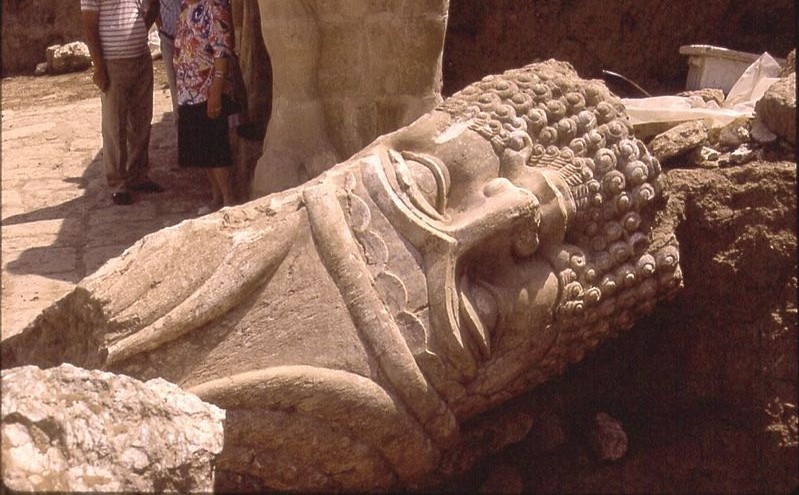German excavation mission in Prophet Jonah hill announces new discoveries

Remains of a lamassu or winged human-headed bull from the Assyrian palace at Nebi Yunus, Nineveh, Iraq. Photo: Gates of Nineveh
Baghdad (IraqiNews.com) – Head of the German archaeological excavation mission, Stefan Mario Maul, revealed that new discoveries have been made by the mission during the past and current seasons.
Since 2004 Maul headed an academic project called Assyria Research Center, funded by Heidelberg Academy of Sciences.
The project is based on re-reading the cuneiform texts with literary content discovered in the city of Assyria.
Maul explained that the mission’s field work for this season are ongoing for about a month as the mission identified more features of the architectural plan of the Assyrian palace located under the rubble of the Nebi Yunus (Prophet Jonah) Mosque on the hill of Al-Tawbah (Repentance).
The architectural plan includes the 54 meters long and 18 meters wide throne hall which is considered one of the largest throne halls in the Assyrian Empire.
Maul clarified that the mission found many pieces of glazed bricks decorated with the Assyrian flower used to adorn the walls of the palace, and they were in a shape of serrations above the walls of the palace.
Additionally, the mission found pieces of bricks with royal inscriptions in cuneiform talking about the kings who built this palace, according to Maul.
Maul also revealed that one of the most important discoveries during the mission’s work was gold pieces of pharaonic Egyptian origin in the shape of a scepter head or a seal in the shape of a ring, believed to be brought to the capital Nineveh as a tribute or spoils collected by the Assyrian King Esarhaddon from Egypt.
Maul confirmed that the mission found carved stone panels with female figures on the front and back sides which is a very rare thing in the art of modern Assyrian sculpture that has not been seen in any other site until now.
Maul emphasized that the mission discovered walls of important rooms in the palace decorated with stone panels engraved with cuneiform inscriptions on its back side mentioning the names of builders of the palace or the king who renovated this part of the palace.
Another discovery in the Assyrian throne hall is a stone platform in the northwest side of the hall the Assyrian king used to ascend to sit on his throne and meet his entourage and guests.
Perhaps this platform is the place where Prophet Jonah met with the Assyrian king when he came to the capital, Nineveh, and succeeded in guiding the king and the inhabitants of the city to worship of the one God.
Most probably this is the reason why residents of the city of Mosul called the hill Al-Tawbah Hill (Repentance Hill).
Therefore, the story of Prophet Jonah is spiritually, historically and ideologically linked with the Assyrian palace, which lies under the rubble of the tomb of Prophet Jonah.
Maul added that the current archaeological site is unparalleled in the Middle East, as it links the Islamic religion to the Assyrian civilization.
Archaeological sites in Nineveh governorate suffered heavy losses because of the bombing and theft of ISIS terrorist groups between 2014 and 2017.
